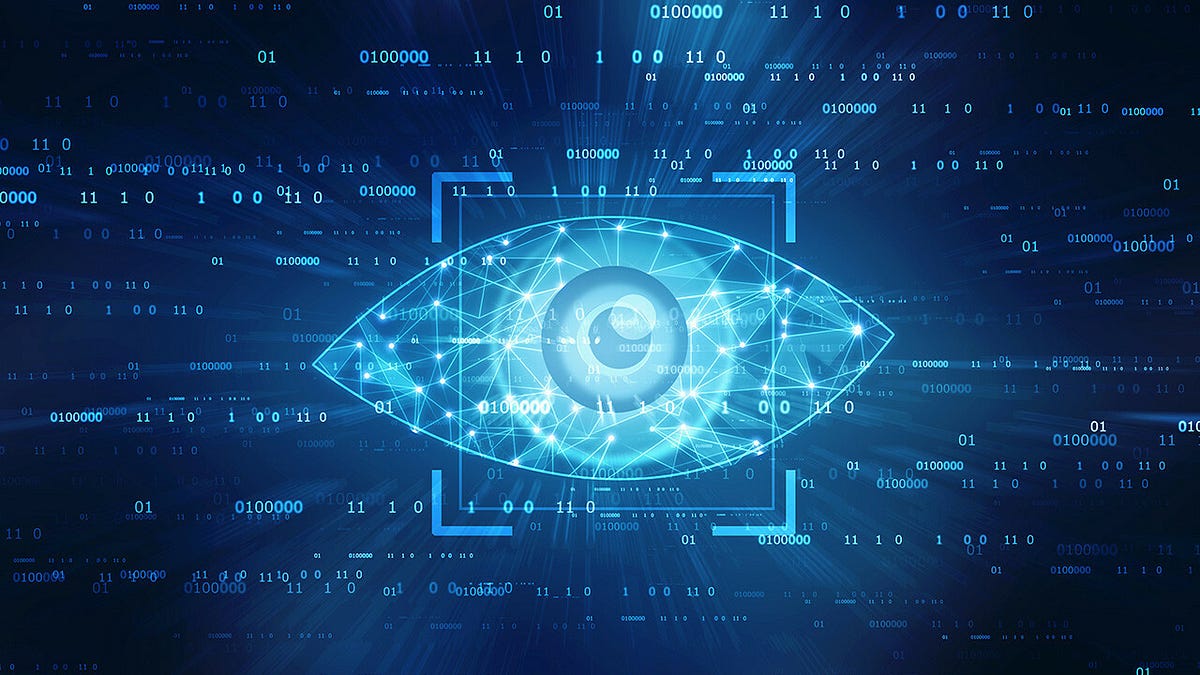Computer Vision Tutorial: Learn CV Basics for Beginners
Uncover the exciting world of Computer Vision and learn how machines are being taught to "see" and interpret images like never before.
Uncover the exciting world of Computer Vision and learn how machines are being taught to "see" and interpret images like never before.
The field of computer vision, where computers are taught to "see" and interpret images like humans do, is both fascinating and rapidly evolving. This guide provides a roadmap for anyone interested in delving into this exciting domain. We'll cover the essential building blocks, from the foundational mathematics to the powerful algorithms that drive computer vision applications.
Start with the basics: Get a solid understanding of linear algebra, calculus, probability, and statistics. These are the mathematical foundations of computer vision.
import numpy as npLearn a programming language: Python is widely used in computer vision due to its extensive libraries. Familiarize yourself with Python and its syntax.
print("Hello, Computer Vision!")Explore image processing techniques: Learn about image representation, filtering, edge detection, and feature extraction. Libraries like OpenCV will be your best friend.
import cv2
image = cv2.imread("image.jpg")Dive into machine learning: Understand concepts like supervised and unsupervised learning, classification, regression, and deep learning.
from sklearn.linear_model import LogisticRegression
model = LogisticRegression()Master convolutional neural networks (CNNs): CNNs are the backbone of many computer vision tasks. Learn about their architecture, layers, and how they process images.
from tensorflow.keras.models import Sequential
from tensorflow.keras.layers import Conv2D
model = Sequential()
model.add(Conv2D(32, (3, 3), activation='relu', input_shape=(64, 64, 3)))Work on projects and practice: Apply your knowledge to real-world problems. Participate in Kaggle competitions or work on personal projects to solidify your understanding.
# Load a pre-trained model
# Preprocess images
# Make predictionsStay updated: Computer vision is a rapidly evolving field. Follow research papers, attend conferences, and continuously learn new techniques and algorithms.
# Explore new libraries and frameworks
# Read research papers on arXivRemember, this is a continuous learning process. Be patient, persistent, and enjoy the journey of exploring the fascinating world of computer vision!
This code provides a step-by-step guide to learning computer vision, starting with basic matrix multiplication in Python and progressing through image processing with OpenCV, machine learning with scikit-learn, convolutional neural networks with TensorFlow/Keras, and object detection with TensorFlow Hub. Each step includes code examples to illustrate key concepts and techniques. The code covers loading and manipulating images, training and evaluating machine learning models, building CNN architectures, and using pre-trained models for object detection. The description encourages exploration of library documentation and emphasizes the importance of hands-on practice in computer vision projects.
This code example complements the article, providing concrete illustrations for each step:
1. Start with the basics:
import numpy as np
# Example: Matrix multiplication
A = np.array([[1, 2], [3, 4]])
B = np.array([[5, 6], [7, 8]])
C = np.dot(A, B)
print("Matrix C:\n", C)2. Learn a programming language:
print("Hello, Computer Vision!")
# Example: Looping through a list of images
image_names = ["image1.jpg", "image2.png", "image3.jpeg"]
for image_name in image_names:
print(f"Processing image: {image_name}")3. Explore image processing techniques:
import cv2
# Example: Loading and displaying an image
image = cv2.imread("image.jpg")
cv2.imshow("Image", image)
cv2.waitKey(0)
cv2.destroyAllWindows()
# Example: Converting to grayscale
gray_image = cv2.cvtColor(image, cv2.COLOR_BGR2GRAY)
cv2.imshow("Grayscale Image", gray_image)
cv2.waitKey(0)
cv2.destroyAllWindows()4. Dive into machine learning:
from sklearn.datasets import load_iris
from sklearn.model_selection import train_test_split
from sklearn.linear_model import LogisticRegression
from sklearn.metrics import accuracy_score
# Load dataset
iris = load_iris()
X = iris.data
y = iris.target
# Split data
X_train, X_test, y_train, y_test = train_test_split(X, y, test_size=0.2)
# Train model
model = LogisticRegression()
model.fit(X_train, y_train)
# Make predictions
y_pred = model.predict(X_test)
# Evaluate performance
accuracy = accuracy_score(y_test, y_pred)
print(f"Accuracy: {accuracy}")5. Master convolutional neural networks (CNNs):
from tensorflow.keras.models import Sequential
from tensorflow.keras.layers import Conv2D, MaxPooling2D, Flatten, Dense
# Define model
model = Sequential()
model.add(Conv2D(32, (3, 3), activation='relu', input_shape=(64, 64, 3)))
model.add(MaxPooling2D((2, 2)))
model.add(Conv2D(64, (3, 3), activation='relu'))
model.add(MaxPooling2D((2, 2)))
model.add(Flatten())
model.add(Dense(10, activation='softmax'))
# Compile model
model.compile(optimizer='adam', loss='sparse_categorical_crossentropy', metrics=['accuracy'])
# Train model (requires image data and labels)
# model.fit(X_train, y_train, epochs=10)6. Work on projects and practice:
# Example: Using a pre-trained model for object detection (using TensorFlow Hub)
import tensorflow_hub as hub
import tensorflow as tf
import matplotlib.pyplot as plt
# Load model
model = hub.load("https://tfhub.dev/google/faster_rcnn/openimages_v4/inception_resnet_v2/1")
# Load and preprocess image
image_path = "image.jpg"
image = tf.keras.preprocessing.image.load_img(image_path)
input_tensor = tf.keras.preprocessing.image.img_to_array(image)
input_tensor = tf.expand_dims(input_tensor, 0)
# Make predictions
detections = model(input_tensor)
# Process and visualize results
# ...7. Stay updated:
# Example: Exploring a new library (like PyTorch)
import torch
# Create a tensor
x = torch.rand(5, 3)
print(x)
# Explore documentation and tutorials for further learningRemember to replace placeholders like "image.jpg" with actual file paths and explore the documentation of libraries for more advanced functionalities. This code provides a starting point for your computer vision journey. Happy coding!
This article provides a concise roadmap for diving into the world of Computer Vision:
1. Build a Strong Foundation:
2. Image Processing Fundamentals:
3. Enter the Machine Learning Arena:
4. Conquer Convolutional Neural Networks (CNNs):
5. From Theory to Practice:
6. Never Stop Learning:
Key Takeaway: Learning Computer Vision is a journey of continuous learning. Be patient, persistent, and embrace the challenge!
As you embark on your computer vision journey, remember that this field is dynamic, demanding both a strong theoretical foundation and hands-on experience. Embrace the blend of mathematics, programming, and algorithmic thinking, and don't be afraid to get your hands dirty with code. Explore the provided examples, delve into the libraries, and most importantly, apply your knowledge to real-world projects. The world of computer vision is vast and constantly evolving, offering endless opportunities for innovation and discovery. Stay curious, persistent, and never stop learning, and you'll be well-equipped to navigate the exciting landscape of computer vision.
 How I learned Computer Vision without spending a penny. | by ... | Earlier I wrote, “How I learned Data Science without spending a penny” and the kind of response I got made me realize that even though a…
How I learned Computer Vision without spending a penny. | by ... | Earlier I wrote, “How I learned Data Science without spending a penny” and the kind of response I got made me realize that even though a… Microsoft Azure AI Fundamentals: Computer Vision - Training ... | Microsoft Azure AI Fundamentals: Computer Vision
Microsoft Azure AI Fundamentals: Computer Vision - Training ... | Microsoft Azure AI Fundamentals: Computer Vision Computer Vision Tutorial | Computer Vision, a vital branch of AI, enables machines to interpret visual data, driving advancements across various industries and creating high demand for skills in this field.
Computer Vision Tutorial | Computer Vision, a vital branch of AI, enables machines to interpret visual data, driving advancements across various industries and creating high demand for skills in this field. Should I learn machine learning or computer vision? : r/computervision | Posted by u/AnxietyArtistic6214 - 6 votes and 58 comments
Should I learn machine learning or computer vision? : r/computervision | Posted by u/AnxietyArtistic6214 - 6 votes and 58 comments Learn Computer Vision | Kaggle | Build convolutional neural networks with TensorFlow and Keras.
Learn Computer Vision | Kaggle | Build convolutional neural networks with TensorFlow and Keras.![Best Computer Vision Courses & Certificates [2025] | Coursera ...](https://s3.amazonaws.com/coursera/media/Grid_Coursera_Partners_updated.png) Best Computer Vision Courses & Certificates [2025] | Coursera ... | Explore top courses and programs in Computer Vision. Enhance your skills with expert-led lessons from industry leaders. Start your learning journey today!
Best Computer Vision Courses & Certificates [2025] | Coursera ... | Explore top courses and programs in Computer Vision. Enhance your skills with expert-led lessons from industry leaders. Start your learning journey today! What is Computer Vision? | IBM | Computer vision is a field of artificial intelligence (AI) enabling computers to derive information from images, videos and other inputs.
What is Computer Vision? | IBM | Computer vision is a field of artificial intelligence (AI) enabling computers to derive information from images, videos and other inputs.